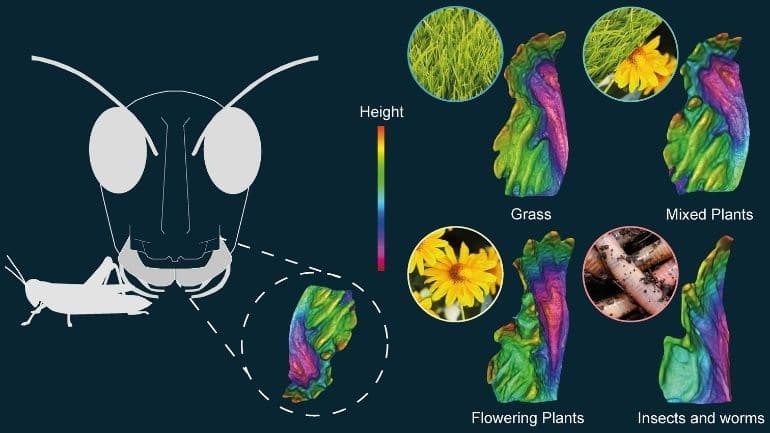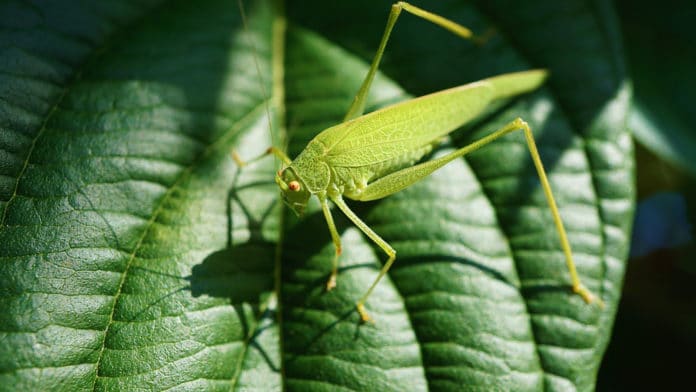Understanding the relationship between form, function, and diet in feeding structures is critical to constraining organisms’ roles in their ecosystems and adaptive responses to food resources. However, working this out can be difficult and time-consuming, especially when the animals are rare, small, or move quickly.
A new study by palaeobiologists at the University of Leicester has identified what grasshoppers eat.
There are 11,000 known species of grasshopper on Earth. But not all grasshoppers eat grass; some are even carnivorous.
Determining what grasshoppers eat requires a detailed study of the contents of their guts or painstaking and time-consuming observations of how they feed in the wild.
In this study, scientists used advanced 3D imaging techniques to map the shape of grasshopper mouthparts, precisely called mandibles. They found surprising similarities between the mouths of grasshoppers and mammal teeth.
The study offers a new way to determine the diets of many species.
Leicester Ph.D. researcher Chris Stockey is the corresponding author for the study. He said: “Knowing what animals eat is fundamental to understanding ecosystems, but working this out can be difficult and time-consuming, especially if the animals you study are rare, small, or move quickly.”
“One of the advantages of our method is the powerful comparisons that it provides.”

“Surprisingly, comparing the mandible landscapes of grasshoppers with mammal’s teeth allows grasshopper diet to be predicted with 82% accuracy – pretty amazing when you consider that the mouthparts of mammals and grasshoppers have evolved independently for 400 million years and were not present in their common ancestor.”
Mark Purnell, Professor of Palaeobiology and Director of the Centre for Palaeobiology at the University of Leicester, said: “We measured the shapes of grasshopper’s mouthparts and analyzed them like the topography of a landscape, and found clear differences linked to diet.”
“Mandibles from carnivorous grasshoppers that eat soft flesh have steeper slopes and sharper cliff edges, while those that eat tough plant material, such as grass, have mandibles with complex undulating ‘landscapes.'”
The study is based on left mandibles removed from dry museum specimens. Specifically, scientists analyzed the mandibles of 45 species.
Here’s more reading you might find interesting:
Grasshoppers, crickets, katydids, and their relatives are unconventional pollinators
Dr. Ben Price, a Senior Curator at the Natural History Museum, who was not involved in the research, said, “This study is a great example of combining modern analytical methods with historical samples from museum collections to help understand the biodiversity of our planet. As technology advances, additional uses of museum collections become possible, and this non-destructive approach could reveal the diet information for thousands of species, decades after the specimens were collected.”
Journal Reference:
- Stockey, C., Adams, N. F., P. Harvey, T. H., J. Donoghue, P. C., & Purnell, M. A. (2022). Dietary inference from dental topographic analysis of feeding tools in diverse animals. Methods in Ecology and Evolution, 13(7), 1464-1474. DOI: 10.1111/2041-210X.13832
